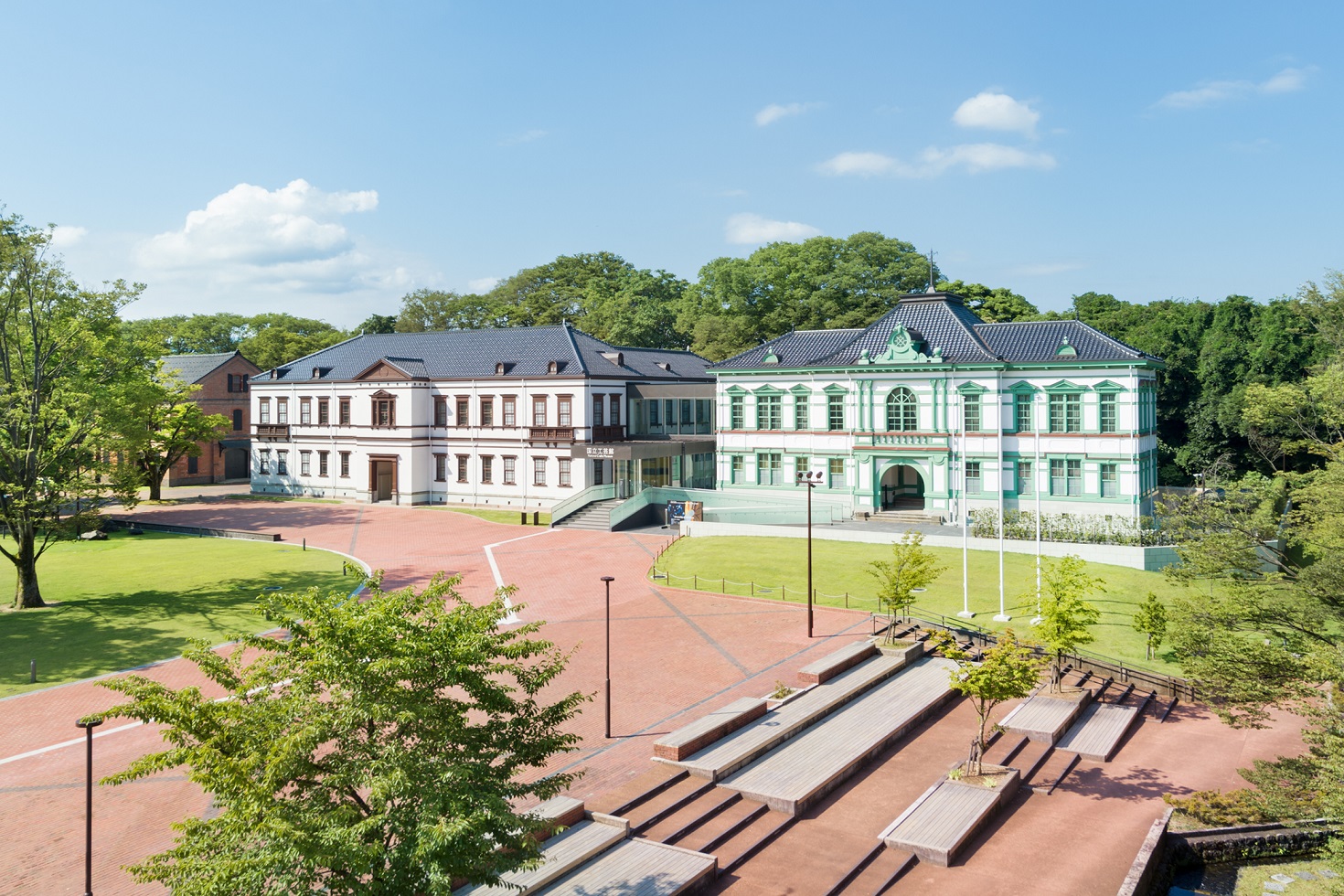The National Crafts Museum Houses Modern Japanese and Overseas Craft and Design Works
Located in Kanazawa 's Kenrokuen Cultural Zone, the National Crafts Museum is dedicated to preserving and exhibiting Japanese crafts. The National Crafts Museum specializes in modern crafts and design, and is located near Kenrokuen Garden in Kanazawa. The museum's collection consists of approximately more than 4,000 works of various types, including ceramics, glass, lacquerware, woodwork, bamboo, dyeing and weaving, dolls, metalwork, industrial design, and graphic design. The museum building are the Old 9th Division Command Headquarters and the Old Army Generals Club, both of which were designated Registered Tangible Cultural Properties in 1997.

National Crafts Museum Entrance Area, Photo Takumi Ota
Don't Miss
- The Matsuda Gonroku's Maki-e Studio is the reassembled and restored working area of lacquer artist and the holder of an Important Intangible Cultural Property (a “living national treasure”) renowned for his work with Maki-e
- The architectural restoration of the museum's new home: two historical buildings that were relocated and reassembled before being refurbished to their original appearances

The Old 9th Division Command Headquarters (Second Floor Hall), Photo Takumi Ota
How to Get There
The National Crafts Museum is an 10-20 minute bus ride on the Hokutetsu local line from JR Kanazawa Station East Gate Bus Terminal—located just outside Kanazawa Station and Hokutetsu-Kanazawa Station—to the Hirosaka・21st Century Museum , followed by a 7-9-minute walk.
Quick Facts
The first national museum situated on the coast of the Sea of Japan
Housed in two historic buildings in Kanazawa that were relocated, renovated, and are now being used as art museums

National Crafts Museum, Photo Takumi Ota
Preserving Japanese modern craft work
The National Crafts Museum was originally established in 1977 as the Crafts Gallery of the National Museum of Modern Art, Tokyo . In 2020, it was relocated to Kanazawa City, Ishikawa Prefecture , as part of the Japanese government's decentralization policy. As the only national art museum that specializes in crafts and design, its collection is indispensable in the study of Japanese art.
The exhibits are focused primarily on works created after World War II, but they also feature Japanese crafts spanning from the 19th century to the present. The museum's permanent collection includes examples of woodwork, bamboowork, metalwork, glassware, ceramics, lacquer crafts, dolls and dyed and woven textiles as well as examples of industrial and graphic design.

The Old Army Generals Club (Second Floor Multipurpose Room), Photo Takumi Ota
Step inside the history of Japanese craftwork
That National Crafts Museum is housed in the Old 9th Division Command Headquarters and Old Army Generals Club, two historic buildings that were carefully dismantled and relocated from the grounds of the Ishikawa Prefectural Noh Theater to the Kenrokuen Cultural Zone. Once reassembled, the buildings were restored to their original appearances, given concrete reinforcements, and linked by modern glass extensions.
The first-floor "Welcome to the World of Crafts” area that acts as an introductory experience to Japanese arts and crafts. Visitors will get to learn about crafting techniques and terminology that will deepen their understanding and appreciation of the museum's exhibits. The section also features a digital experience zone that allows visitors a 360-degree view of selected examples of the museum's collection.
The second floor features the Matsuda Gonroku's workspace, the actual working area used by Matsuda Gonroku (1896–1986), an artisan who was designated a Living National Treasure based on his accomplishments with Maki-e – a traditional Japanese lacquer technique distinguished by its use of gold and silver powder. The studio was relocated to the National Crafts Museum and reassembled to appear exactly as it was during Gonroku's lifetime. Visitors will see the tools and materials he used to practice his craft and get to watch documentary videos about his life and work.
Closed on Mondays (open on holiday Mondays and closed on the following days), during installation periods, and New Year holidays.

























































